THE COASTERS / “Coasters Mixtape”
Once upon a time there were two Turks, two Jews and four Negroes and they…—stop me if you heard this before. 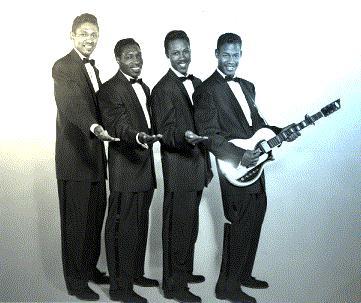
I’m about to talk about The Coasters but it’s both a simple and a complex story. You can listen to their music and simply enjoy it to the utmost. Or, you can also delve into the behind the scenes reality and pursue a deeper appreciation of a major historical period of pop music in America, a period when racial segregation was de rigueur but was also withering beneath the onset of the modern day Civil Rights Movement. The Coasters are a picture perfect representation of both sides of the segregation/integration coin.
The Coasters—sometimes known as the “clown princes of R&B”—are one of the most successful doo-wop groups ever. They had a string of hits that virtually defined the transitional period when R&B (rhythm and blues) morphed into R&R (rock and roll). The most significant thing about The Coasters is that they fit comfortably in both camps and in that regard they have no equal.
The Coasters were formed from the remnants of The Robins, a Los Angeles based doo-wop group who had moderate success on the West Coast in the early fifties.
The Robins recorded for Spark Records, an independent label run by Jerry Leiber and Mike Stoller. I’ll come back to Leiber and Stoller in a minute but first let’s run out the Coaster lineage. Before some of the guys became The Coasters late 1955, the Robins had already recorded two songs identified with The Coasters: “Riot In Cell Block #9” and “Smokey Joe’s Café.”
When Lieber and Stoller closed down Spark Records and went to the East Coast to join Atlantic Records as producer, the songwriting duo took two of the Robins with them, Carl Gardner and Bobby Nunn. Carl Gardner became the de facto leader of the new group. By 1957 the basic Coasters line-up was settled with singers who came from both the West Coast and the East Coast (hence the name “Coasters”): Gardner, lead tenor; Billy Guy, lead baritone; Will “Dub” Jones, bass; and Cornel Gunter, second tenor. Added to the mix on most of the records was the significant presence of Atlantic session mainstay, King Curtis on tenor saxophone.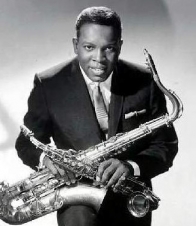
These guys were consummate entertainers who dominated the airwaves in the late fifties walking a fine line between minstrelsy and comedy—or should I say “dancing” a fine line because they had more talent than most of their competition combined.
If you really want a good chuckle, check out some U-tube videos of The Coasters. They were a gas. They had the charm and timing of expert thespians as well as great doo-wop harmonies.
I remember them. I and every other sixth grader back in the day had a “Charlie Brown” in my class. We all bopped to “Poison Ivy” and who could resist reciting “Yakety Yak” under your breath when your parents got on you about doing chores around the house?
Was it the delivery or the lyrics that made those songs so memorable? The truth is both ingredients were essential to the successful Coasters recipe.
OK, that accounts for the Negroes. Atlantic Records was owned and run by the Turkish brothers Nesuhi and Ahmet Ertegun, who were intent on recording and promoting black music. The Jewish element was the super-successful songwriting team of Leiber (lyrics) and Stoller (music) who had already had major hits.
In fact one of their songs, "Hound Dog," was so successful it was a hit twice, first as a race record by Big Mama Thornton and then as an early single by the latest white “king” of black music, Elvis Presley. As memorialized in the movie Forest Gump, Elvis initial notoriety was his ability to sing and dance like a black man. 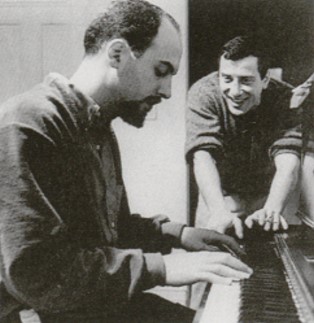
Leiber and Stoller were very conscious of what they were doing. When asked to define The Coaster’s, Leiber said “a white kid’s view of a black person’s conception of white society.”
R&R really took off when the record industry found white artists who could approximate black styles and the rest is… well, you know, except there’s a twist that I think needs to be recognized.
Most of us Americans tend to look at life in racial terms but those terms do not reflect the actuality of American life. In the fifties Jews were not fully accepted even though they had achieved some levels of educational and financial parity with (but not within) the dominant WASP (white anglo-saxon protestant) society. The Ertegun’s like many other non-white immigrants had a different conception of race.
The story of non-WASP assimilation into the dominant society is a story of intersections, confluences and conflicts, divergences and partnerships. This story is the back story to the music.
On the one hand there was a historical moment of cooperation but there was also a painful betrayal. Black musicians made the music, others not only reaped the financial benefits within this capitalist society, the white dominated industry also set up guidelines that made equality damn near impossible.
In the case of The Coasters the system is set up to financially reward those who own the intellectual property. Those who provided the performing talent were (and in a surprisingly high percentage of cases, still are) left, at best, with unequal royalties and honorary awards.
One example will illustrate my point. When a record is made there are two copyrights: one for the authors and one for the particular performance. The song’s authors usually split the ownership and the royalties with the publishing company. The performance itself (often referred to simply as “the masters”) is usually owned by the record company. The “artist” owns nothing—not the song itself, nor the particular performance. Royalties (a small percentage) from record sales are established in a contract with the record company but generally do not include any ownership.
Yes, there have been changes since the fifties and more and more artists are seeking to “own” as well as perform.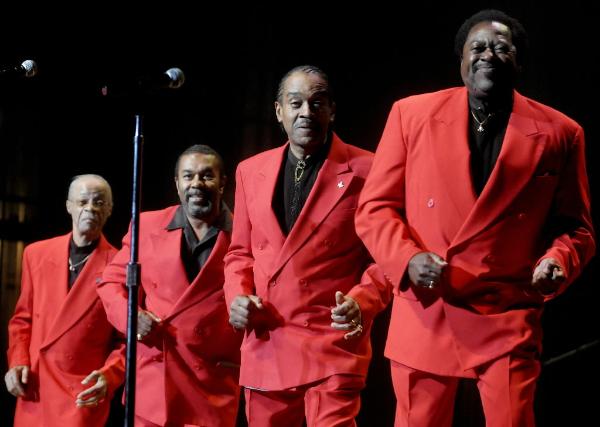
Today, in 2009, The Coasters continue to perform (with Gardner’s son now one of the group)—Leiber and Stoller have long since retired.
Enjoy the music but please do not overlook the back story.
BTW, check the end of “Little Egypt”—I wonder how long before Kanye samples those chipmunks ;->)
—Kalamu ya Salaam
Coasters Mixtape Playlist
This one is easy, all of the songs are taken from a 2CD, 51-song set that was produced by Rhino Records in a limited edition. There are bunches of Coasters album around, including a handful of “greatest hits” releases but none of them of them compares to Fifty Coastin’ Classics.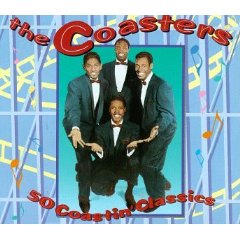
01 “Brazil”
02 “Down In Mexico”
03 “Smokey Joe's Café”
04 “Along Came Jones”
05 “Run Red Run”
06 “Yakety Yak”
07 “Wake Me, Shake Me”
08 “Charlie Brown”
09 “Shoppin' For Clothes”
10 “Three Cool Cats”
11 “D.W. Washburn”
12 “Framed”
13 “Riot In Cell Block #9”
14 “What About Us”
15 “Searchin' ”
16 “Down Home Girl”
17 “Young Blood”
18 “Poison Ivy”
19 “Girls Girls Girls (Part 2)”
20 “Zing! Went The Strings Of My Heart”
21 “Little Egypt (Ying-Yang)”
This entry was posted on Monday, May 11th, 2009 at 12:35 am and is filed under Classic. You can follow any responses to this entry through the RSS 2.0 feed. You can leave a response, or trackback from your own site.
One Response to “THE COASTERS / “Coasters Mixtape””
May 15th, 2009 at 3:49 pm
Baba, you’re taking me back to childhood. I’m sure you know we played these records TO DEATH. Loved it, loved the comedy, the rhythms, the intonations. Even now some of the expressions tickle me. Love the groove of Down Home Girl and the hilarious lyrics. The sad comedy of not being able to bring home a herringbone suit, after the salesman gives you the opportunity to “stand there in that mirror and dig yourself.” 🙂
Thanks, I think I’ll have to share this with Ua.
Leave a Reply
| top |